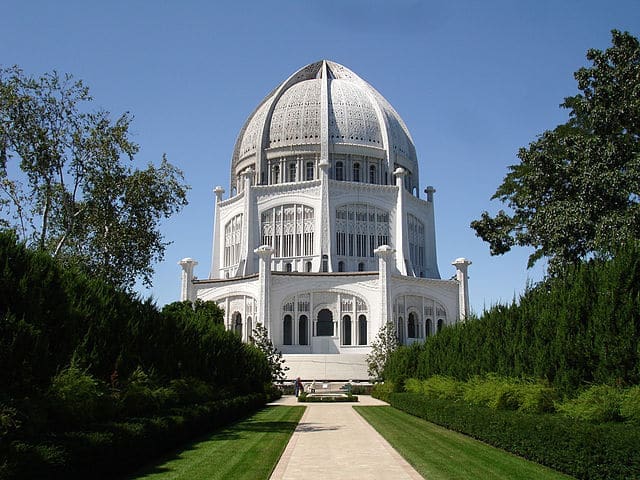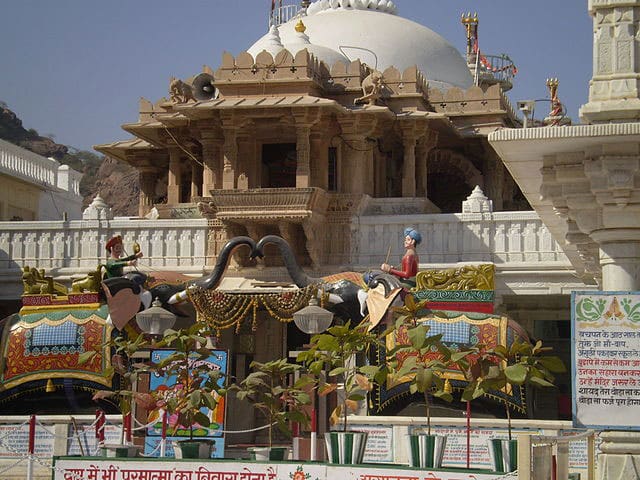The Bahai Faith, a religion founded in the 19th century, boasts a unique and breathtaking architectural legacy in the form of Baha’i Temples. These structures, scattered across the globe, serve as symbols of unity and spirituality. In this comprehensive exploration, we delve into the intricacies of the seven major Baha’i Temples around the world, each telling a story of faith, diversity, and architectural brilliance.
I. Introduction
The Baha’i Faith, with its roots in the 19th century, stands as a testament to unity and peace. Central to this faith are Baha’i Temples, which transcend traditional religious boundaries. In this article, we embark on a journey to explore the significance, architecture, and cultural impact of the seven major Baha’i Temples around the world.
II. The Baha’i Faith: A Quick Primer
To truly understand the essence of Baha’i Temples, a brief overview of the Baha’i Faith is essential. Founded by Baha’u’llah in the mid-1800s, the religion promotes the oneness of humanity, equality of all people, and the importance of unity in diversity.
III. The Concept of Baha’i Temples
Baha’i Temples, also known as Houses of Worship, serve as places for communal worship and reflection. Their architectural design embodies the principles of the Baha’i Faith, reflecting the unity of all religions and the harmony between science and religion.
IV. Lotus Temple, Delhi, India
Overview of Lotus Temple
The Lotus Temple, located in Delhi, India, is a marvel of architectural brilliance. Shaped like a blooming lotus flower, it welcomes people of all faiths to pray and meditate.

Architectural Highlights
The lotus-shaped structure, made of white marble, symbolizes purity and peace. Its nine sides represent the nine major religions of the world, emphasizing the inclusivity of the Baha’i Faith.
Significance within the Baha’i Community
The Lotus Temple stands as a beacon of the Baha’i Faith in India, fostering interfaith dialogue and understanding.
V. Baha’i House of Worship, Wilmette, USA
Overview of the Wilmette Temple
Situated in Wilmette, Illinois, the Baha’i House of Worship is an architectural masterpiece. Its intricate design and lush surroundings make it a spiritual oasis.
Architectural Elements and Design
The temple’s dome, surrounded by gardens, echoes the Baha’i principles of unity and harmony. The intricate ornamentation reflects the diversity of the global Baha’i community.
Historical Context and Role in the Baha’i Community
The Wilmette Temple, completed in 1953, holds historical significance as one of the oldest Baha’i Houses of Worship. It remains a center for community activities and gatherings.
VI. Baha’i House of Worship, Sydney, Australia
Introduction to the Sydney Temple
Nestled in the suburbs of Sydney, Australia, this Baha’i House of Worship captivates with its unique design and panoramic views.
Unique Features and Architectural Significance
The Sydney Temple’s shell-like structure and stunning symmetry draw inspiration from both nature and mathematical precision. It serves as a spiritual retreat for the Australian Baha’i community.
Cultural Impact in Australia
Beyond its religious importance, the Sydney Temple contributes to the cultural landscape of Australia, fostering understanding and dialogue.
VII. Baha’i House of Worship, Kampala, Uganda
Overview of the Kampala Temple
In the heart of Africa, the Baha’i House of Worship in Kampala, Uganda, stands as a testament to the flourishing Baha’i community on the continent.
Architectural Uniqueness
The temple’s dome and terraced gardens showcase a blend of traditional African and modern architectural elements. It serves as a symbol of unity in a region marked by diversity.
Baha’i Community in Uganda
The Kampala Temple plays a pivotal role in the growth and development of the Baha’i Faith in Uganda, fostering a sense of community and shared values.
VIII. Baha’i House of Worship, Langenhain, Germany
Introduction to the Langenhain Temple
Nestled in the scenic landscapes of Germany, the Baha’i House of Worship in Langenhain captures the essence of the Baha’i Faith through its design and purpose.
Architectural Nuances
The Langenhain Temple’s circular structure and central dome symbolize the Baha’i teachings of unity and equality. Its architectural nuances reflect the diversity of the European Baha’i community.
Baha’i Presence in Germany
As a focal point for Baha’i activities in Germany, the Langenhain Temple contributes to the spiritual and cultural fabric of the country.
IX. Baha’i House of Worship, Panama City, Panama
Overview of the Panama City Temple
Situated in the heart of Central America, the Baha’i House of Worship in Panama City stands as a testament to the growth and acceptance of the Baha’i Faith in the region.
Architectural Features
The temple’s intricate design, inspired by local flora, creates a serene environment for worship and reflection. It serves as a bridge between nature and spirituality.
Baha’i Faith in Panama
The Panama City Temple reflects the Baha’i community’s dedication to fostering unity and understanding in a diverse cultural landscape.
X. Baha’i House of Worship, Santiago, Chile
Introduction to the Santiago Temple
In the vibrant city of Santiago, Chile, the Baha’i House of Worship beckons with its architectural grandeur and spiritual significance.
Architectural Marvels
The Santiago Temple’s majestic structure and lush gardens provide a tranquil space for contemplation. Its nine entrances symbolize the unity of the world’s major religions.
Baha’i Community in Chile
The Santiago Temple stands as a focal point for the Baha’i community in Chile, promoting social cohesion and collaboration with other faith communities.
XI. Common Architectural Themes Among Baha’i Temples
Unity in Diversity
Across continents, Baha’i Temples share common architectural themes emphasizing unity in diversity. The use of symbolic shapes and motifs unites these structures in a global expression of the Baha’i Faith.
Symbolic Representation in Design
From lotus flowers to domes, each Baha’i Temple incorporates symbolic elements representing the principles of the Baha’i Faith. These symbols create a visual language that transcends cultural and linguistic barriers.
XII. Baha’i Temples as Centers of Community Activity
Beyond Worship: Community Engagement
Baha’i Temples go beyond serving as places of worship; they act as hubs for community engagement. Educational programs, cultural events, and social initiatives foster unity and collaboration.
Educational and Cultural Events
The temples host seminars, workshops, and cultural events, promoting education, understanding, and appreciation for diverse perspectives.
XIII. Challenges Faced by Baha’i Temples
Cultural and Political Obstacles
Despite their universal message, Baha’i Temples face challenges in regions where cultural or political tensions may impact religious freedom. Overcoming these obstacles requires diplomacy and community resilience.
Maintenance and Preservation Challenges
The architectural intricacy of Baha’i Temples poses challenges in terms of maintenance and preservation. Balancing modern needs with historical significance is a delicate task.
XIV. The Future of Baha’i Temples
Expansion Plans and New Constructions
As the Baha’i Faith continues to grow, new Baha’i Temples are planned and constructed. These expansions signify the global reach and enduring relevance of the Baha’i teachings.
Baha’i Community Outreach Initiatives
In an era of increasing interconnectedness, Baha’i communities around the world engage in outreach initiatives to share the teachings of their faith. Social media, educational programs, and interfaith dialogues play crucial roles.
XV. Impact of Baha’i Temples on Local Communities
Social and Cultural Contributions
Baha’i Temples make substantial contributions to the social and cultural fabric of their host communities. They act as catalysts for positive change and understanding.
Interfaith Dialogues and Collaborations
Through interfaith dialogues and collaborations, Baha’i Temples promote harmony and cooperation among people of different faiths. They serve as platforms for fostering mutual respect and understanding.
XVI. Conclusion
In conclusion, the seven major Baha’i Temples around the world stand as beacons of the Baha’i Faith, promoting unity, peace, and understanding. From the iconic Lotus Temple in Delhi to the serene Santiago Temple in Chile, each structure tells a unique story of faith and resilience. As these temples continue to inspire and unite communities globally, they reinforce the timeless principles of the Baha’i Faith.
FAQs
1. What is the Baha’i Faith?
The Baha’i Faith is a monotheistic religion founded by Baha’u’llah in the 19th century. It emphasizes the oneness of humanity, equality of all people, and unity in diversity.
2. What is the significance of Baha’i Temples?
Baha’i Temples serve as places of worship and reflection, embodying the principles of the Baha’i Faith. They symbolize unity among different religions and the harmony between science and religion.
3. How are Baha’i Temples funded?
Baha’i Temples are funded through voluntary contributions from the Baha’i community. No external fundraising or financial assistance is sought.
4. Can people of other faiths visit Baha’i Temples?
Yes, Baha’i Temples are open to people of all faiths. They welcome individuals seeking a space for meditation, prayer, and reflection, irrespective of their religious background.
5. How are the architectural designs of Baha’i Temples chosen?
The architectural designs of Baha’i Temples are chosen through an international design competition. The selected design reflects the principles of the Baha’i Faith and the cultural context of the location.
6. Are Baha’i Temples only places of worship?
No, Baha’i Temples also serve as centers for community activities, including educational programs, cultural events, and social initiatives.
7. Are there plans for more Baha’i Temples in the future?
Yes, as the Baha’i Faith continues to grow, there are plans for the construction of new Baha’i Temples around the world.











